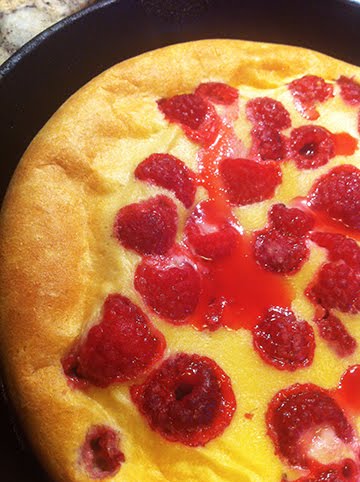 I was going to blog about sourdough herb bread, but that will have to wait until next month. Yeah, like tomorrow or the next day. :)
I was going to blog about sourdough herb bread, but that will have to wait until next month. Yeah, like tomorrow or the next day. :)Today, being Halloween, otherwise know as All Hallows Eve, seems like the right time to talk about someone who has died recently. When someone dies it is difficult for the family and close friends, both because they miss the departed, but also because there really isn't much you can do to comfort those closest to them. You can send flowers and cards, call and give hugs, but nothing lightens the grief for long. That is not a bad thing, really. Grief is one way we honor the dead. How sad if you depart this world and no one grieves for you.
Ray G led a long and full life. He and his wife, my dear friend and sister-of-the-heart W, had over 60 years together and were blessed with children, grand children, and great grand children. None of that helps right now. Ray was the sweetest guy...loving, generous, with a great sense of humor, gentle, quiet, intelligent. He will be greatly missed.
 One of the things that we can do is to bring food...always appealing to a food blogger. For the gathering at their home after the funeral we've been asked to bring finger foods. I'm making two cookie recipes from the cookbook I created after my Dad died...making the cookbook was my way of grieving for Dad. It's called Family Food and has lots of the recipes from my childhood. The first cookies, Saucepan Fruit Bars, is really easy, makes a lot and is a wonderful, buttery, lightly spiced bar cookies with dried currants and raisins. There is a yummy lemon glaze on top. They work well for receptions because they can be cut in little squares or bars, they don't crumble, but are moist and very tasty. The recipe is from my Mom, Nancy.
One of the things that we can do is to bring food...always appealing to a food blogger. For the gathering at their home after the funeral we've been asked to bring finger foods. I'm making two cookie recipes from the cookbook I created after my Dad died...making the cookbook was my way of grieving for Dad. It's called Family Food and has lots of the recipes from my childhood. The first cookies, Saucepan Fruit Bars, is really easy, makes a lot and is a wonderful, buttery, lightly spiced bar cookies with dried currants and raisins. There is a yummy lemon glaze on top. They work well for receptions because they can be cut in little squares or bars, they don't crumble, but are moist and very tasty. The recipe is from my Mom, Nancy. The second recipe is for rolled sugar cookies which have just a hint of nutmeg. The recipe is from Mrs. Johnston, a good friend of my Mom and Dad's. They can be cut with any cookie cutter shape and iced or sprinkled with colored sugar, or even left plain. This would be a great recipe for Christmas cookies because the cookies are the perfect canvas for decorations.
The second recipe is for rolled sugar cookies which have just a hint of nutmeg. The recipe is from Mrs. Johnston, a good friend of my Mom and Dad's. They can be cut with any cookie cutter shape and iced or sprinkled with colored sugar, or even left plain. This would be a great recipe for Christmas cookies because the cookies are the perfect canvas for decorations. I used a heart cutter and a star shape. I iced the hearts with a lemon juice, confectioners sugar glaze & sprinkled them with colored sprinkles. It was fun seeing the random way the colors landed on the glaze. For the stars, I mixed some unsweetened cocoa into the lemon glaze...I love chocolate and lemon together...then sprinkled chocolate sprinkles over the iced stars. Usually I don't enjoy cutting out cookies and decorating them, but today it was rainy and it was a fun project. Hope the folks coming to honor Ray tomorrow will enjoy them.
I used a heart cutter and a star shape. I iced the hearts with a lemon juice, confectioners sugar glaze & sprinkled them with colored sprinkles. It was fun seeing the random way the colors landed on the glaze. For the stars, I mixed some unsweetened cocoa into the lemon glaze...I love chocolate and lemon together...then sprinkled chocolate sprinkles over the iced stars. Usually I don't enjoy cutting out cookies and decorating them, but today it was rainy and it was a fun project. Hope the folks coming to honor Ray tomorrow will enjoy them.1 1/2 cups sugar
2 eggs (or use egg substitute)
1/2 teaspoon salt
1/2 teaspoon baking soda
3 cups sifted all purpose flour
3 cups sifted all purpose flour
1/2 teaspoon EACH cinnamon, cloves, and nutmeg
1/4 cup buttermilk
1 cup currants
1/4 cup buttermilk
1 cup currants
1 cup raisins
1) Preheat oven to 350 degrees.
2) Melt the butter in a saucepan. Add sugar and the eggs, beaten, stir well to blend.
3) Add sifted dry ingredients and buttermilk. Mix well.
4) Stir in fruit. Mix well.
5) Spread in greased pan 15” x 10” x 1 “
6) Bake about 25 minutes. Remove from oven. Brush with glaze of a mixture of 1 cup confectioners sugar, 4 teaspoons lemon juice, 1/2 teaspoon lemon rind.
7) Cool in pan. Cut into 2” x 1” bars. Makes about 45.

Rolled Sugar Cookies
Cut out sugar cookies, a recipe from I. Johnston
1 cup butter or margarine, softened
1 cup granulated sugar
1 egg
3 cups all-purpose flour
1 teaspoon baking soda
¼ teaspoon ground nutmeg
Cream the butter in a large mixing bowl, add the sugar and egg and mix well.
In another bowl mix together the flour, baking soda and nutmeg. Add that mixture to the butter mixture and mix to blend thoroughly. If dough is too sticky to roll, chill until firm enough to roll.
Roll dough to 1/8 inch thickness. Cut with cookie cutters. Place on greased cookie sheets. Bake at 400 degrees until lightly browned, about 7-8 minutes. After cookies have cooled, can be frosted & decorated as desired
1) Preheat oven to 350 degrees.
2) Melt the butter in a saucepan. Add sugar and the eggs, beaten, stir well to blend.
3) Add sifted dry ingredients and buttermilk. Mix well.
4) Stir in fruit. Mix well.
5) Spread in greased pan 15” x 10” x 1 “
6) Bake about 25 minutes. Remove from oven. Brush with glaze of a mixture of 1 cup confectioners sugar, 4 teaspoons lemon juice, 1/2 teaspoon lemon rind.
7) Cool in pan. Cut into 2” x 1” bars. Makes about 45.

Rolled Sugar Cookies
Cut out sugar cookies, a recipe from I. Johnston
1 cup butter or margarine, softened
1 cup granulated sugar
1 egg
3 cups all-purpose flour
1 teaspoon baking soda
¼ teaspoon ground nutmeg
Cream the butter in a large mixing bowl, add the sugar and egg and mix well.
In another bowl mix together the flour, baking soda and nutmeg. Add that mixture to the butter mixture and mix to blend thoroughly. If dough is too sticky to roll, chill until firm enough to roll.
Roll dough to 1/8 inch thickness. Cut with cookie cutters. Place on greased cookie sheets. Bake at 400 degrees until lightly browned, about 7-8 minutes. After cookies have cooled, can be frosted & decorated as desired












































